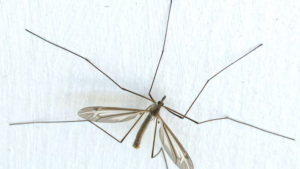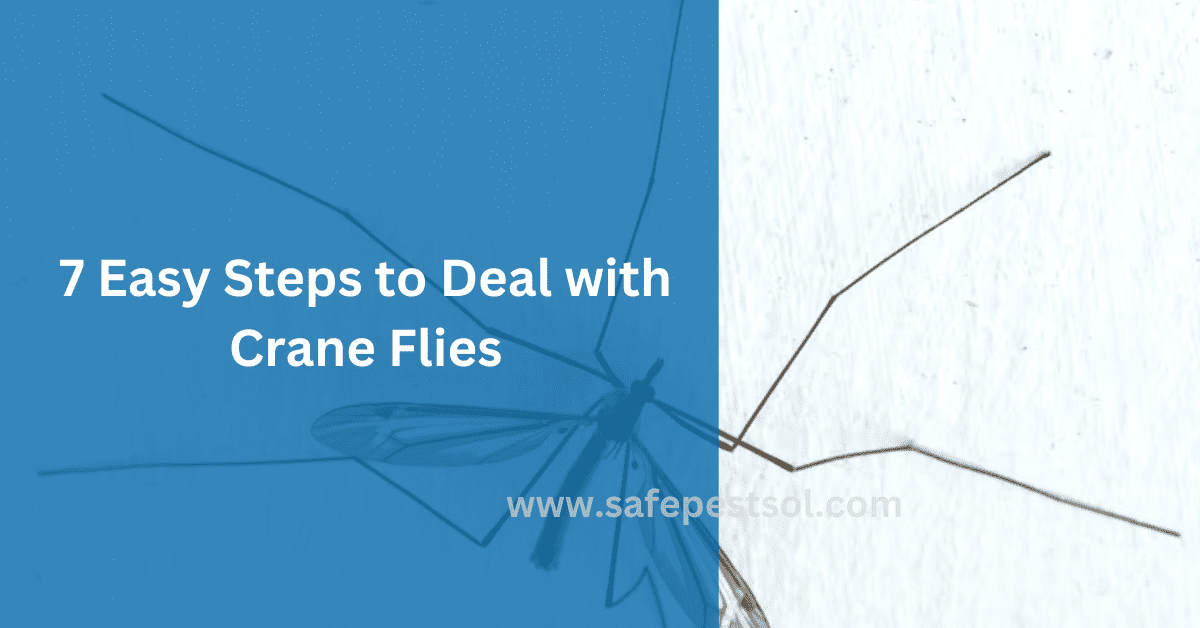How to Get Rid of Crane Flies Naturally: Easy and Quick Methods
Many people get confused between crane flies and mosquitoes. However, these pests don’t suck blog like mosquitoes. Their larvae, known as leatherjackets, may destroy or damage your lawn.
Grass and roots are among the favorite things to eat for these pests, resulting in brown patches and weak turf. It may destroy your lawn and greenery if you don’t treat these pests.
How can you manage crane flies without relying on any harmful chemicals? Is there any way? Let’s read this blog and find some helpful and easy ways to get rid of crane flies naturally.

What Are Crane Flies?
Crane flies are part of the Tipulidae family. Their characteristics include slender and long legs with a fragile body. Many people consider these pests to be similar to mosquitoes because of their appearance. While they are popular as mosquito hawks and eaters, they don’t feed on mosquitos.
You can find several types of crane fly species. However, the most common species can be found mainly in North America. Here are some of their species:
- Marsh Crane Fly (Tipula oleracea) – These are from Europe and Africa and are spread over a large population over North America.
- European Crane Fly (Tipula paludosa) – These are also originally from Europe and Africa, and it is commonly observed in North America.
- Winter Crane Fly (Trichocera annulata) – A smaller relative of the common crane fly, often mistaken for daddy long legs due to its slender build.
How to Recognize Crane Flies
Adult crane flies are often mistaken for mosquitoes because of their similarity in appearance. However, they do not bite or feed on blood like mosquitoes do. These insects tend to be most active at twilight and are attracted to moist places, such as an irrigated lawn.
The real threat is their larvae, leatherjackets. These are fat, wormlike creatures with a gray to olive-brown color. Sometimes reaching as long as 1.5 inches long, these larvae feed on grass roots and can cause some significant lawn damage.
7 Easy Steps to Deal with Crane Flies
1. Identify Crane Fly Larvae and Adults
Check your lawn regularly for patches with a yellowish-brown appearance. If you notice one, it can be a sign of crane fly larvae existence. Remove some small sections of this part to observe the leathery jacket.
Such larvae look like tiny worms with a brown colour or white-greenish hue. Such larvae are very common during spring and autumn, usually when you observe their strong actions on wet surfaces.
2. Make Your Yard Attractive to Natural Predators
You can invite natural killers to come and feed on crane flies. Birds are the primary consumers of adult crane flies and their larvae. You can attract birds in your home by erecting bird feeders, installing birdhouses, and creating birdbaths. When birds realize that your home has an ideal habitat, they will automatically begin to control the population of crane flies.
3. Try Essential Oils
Some of the essential oils have natural repellent properties against crane flies.
- Neem oil – It is a natural pesticide that can hinder the feeding and reproduction of pests. It should be mixed with water and sprayed in affected areas.
- Garlic spray – This can be done by mixing crushed garlic with water, and then sprayed over the lawn to repel adult crane flies.
- Peppermint or lavender oil – Mix peppermint or lavender oil with water and spray the mixture over the lawn. The crane flies do not lay eggs on these lawns because it repels them. Be very careful while applying essential oils, as they affect pets and grass.
4. Spray Effective Insecticide
If nothing works, then applying insecticides is the next step. Chemical products, such as imidacloprid or pyrethroids can kill crane fly larvae by suffocating them. Also, these chemicals paralyze these insects and will remove them completely. Ideally, the chemical control measure should be carried out in early and middle April when the larvae have hatched from eggs. Always follow all safety precautions while applying or handling any chemical substance.
5. Keep Your Lawn Maintained
Maintaining lawn regularly becomes less attractive to the crane fly. You can follow these habits:
- Only water your lawn when it becomes necessary (close to 1 to 1.5 inches a week)
- Regular mowing to keep plants growing at a suitable height
- Restrict moisture at the bottom by removing extra thatch
- Soil aerated and its drainage heightened
- Improve drainage by aerating soil
6. Avoid Wet Patches in Your Lawn
Crane flies love humid environments. Reduce infestation by following these methods:
- Keep a well-drainage area for your grass
- Do not water excessively.
- Eliminate standing water to avoid any trouble.
Your lawn won’t become a breeding ground for crane flies if you keep it dry.
7. If Nothing Works, Call Professionals
If crane flies continue to be a problem despite your efforts, consider hiring a pest control expert. Professionals can assess the situation and use targeted treatments to eliminate the infestation safely and effectively.
How Crane Flies Can Damage Your Lawn
The larvae are underground feeders, eating plant roots, blades of grass, and other small plants. If there is an infestation, the adult crane flies might stay underground for as long as twelve months, feasting on your plants regularly. Gradually, this will make your lawn weak, patchy, and unattractive. In the worst cases, widespread destruction can happen to your lawn if not handled.
When Crane Flies Become Active
Crane flies are usually active during fall in North Carolina and similar regions. Once temperatures cool, the adult crane fly will come out to mate and lay eggs on grassy grounds. Their larvae hatch and feed on grass roots, creating brown patches and weak turf. During spring, it gets noticeable since the grass thins out.
Conclusion
Although crane flies themselves do not bite or affect human beings, the larvae they lay can seriously destroy your lawn. It becomes important to prevent major damage and take action on early signs of infestation. You can also try natural pest control measures including encouraging the birds, using essential oils, and keeping your lawn maintained.
FAQs
1.How can I identify crane fly larvae in my lawn?
Look for brown or thinning patches of grass. Dig up a small section of the lawn and look for teeny, worm-like larvae in the soil.
2.Are crane flies dangerous to my lawn?
Adult crane flies do no harm to lawns, but their larvae might. Some of their species feed on rotting organic material in the soil.
3.When should I treat crane fly infestation?
Early to mid-April is the best time to deal with these pests. During this period, their eggs and larvae become most active.
Get a Long-Lasting Solution for Crane Fly Infestation!
Have you not got rid of crane flies in your yard yet? You are at the right place then. Our all-in-one pest control services are just one call away from you. Just contact us now and book your slot!

